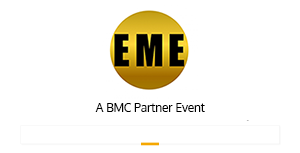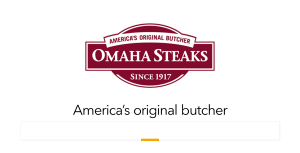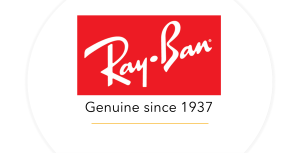EEA YouTube Show: Why the Recognition Field Remains Early Stage
Most people consider the ago-old recognition field a mature industry, given that the first companies serving the market were launched in the 1800s to provide commemorative rewards for businesspeople. In the 1990s, technology firms entered the business, many raising significant funds to scale. Several failed; none have achieved growth anywhere close to the customer relationship management and other technology fields. Why? This show provides answers. Click here to watch or listen to the show.
Summary of Insights
Highlights of Panelist Views
Click here to subscribe to RRN weekly, and here for an RRN media kit.
The recognition field remains early stage because until organizations can measure the impact in ways directly related to their purpose, goals, and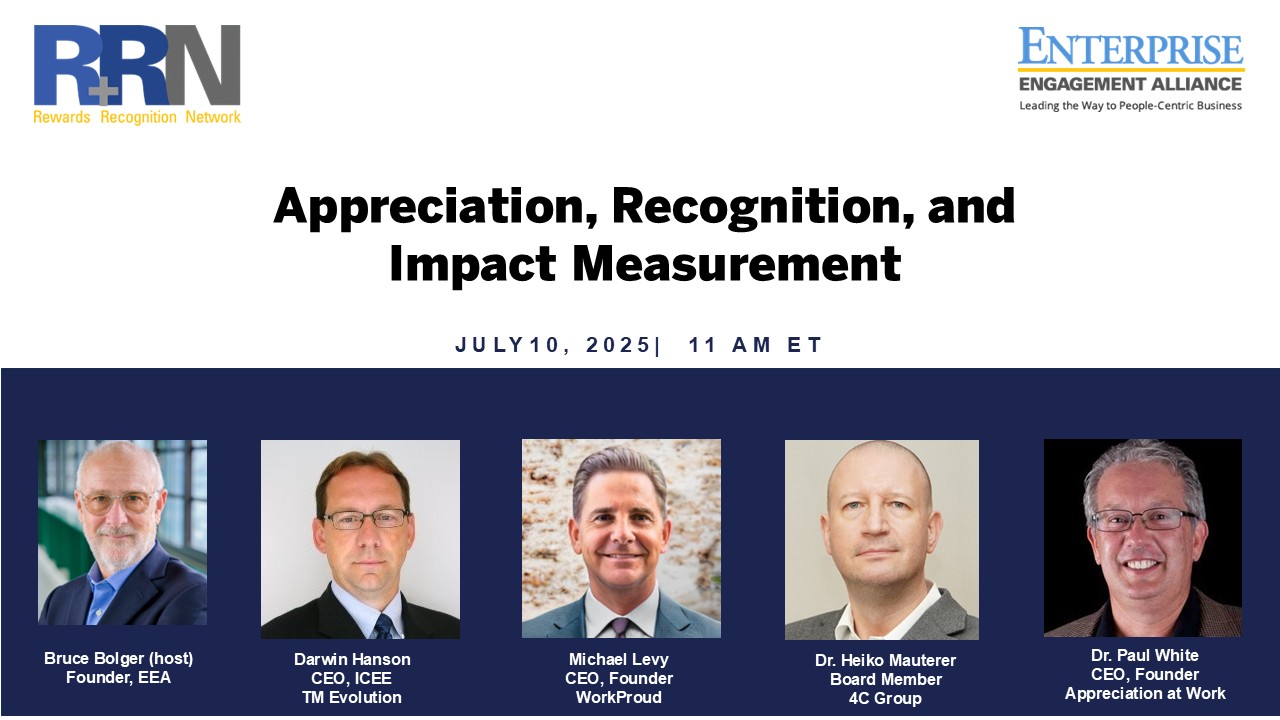 objectives, it will remain a nice-to-have cost center. To get to the next level, and be viewed as an investment, the field must move from making vague generic claims to demonstrating concrete value creation.
objectives, it will remain a nice-to-have cost center. To get to the next level, and be viewed as an investment, the field must move from making vague generic claims to demonstrating concrete value creation.
These are key finding of this Enterprise Engagement Alliance Purpose Leadership and Stakeholder Management YouTube show featuring:
- Darwin Hanson, CEO, Founder of TM Evolution, a compensation and human capital analytics advisory and technology firm.
- Michael Levy, CEO, Founder of WorkProud, a leading firm using recognition, rewards and technology to align employees toward a common purpose.
- Dr. Paul White, Founder of Appreciation at Work, an international solution provider focusing on enhancing employee experiences through a system that supports appreciation.
- Dr. Heiko Mauturer, Board Member, Senior Partner, 4C Group; member, ISO 30414 Human Capital working group was scheduled to attend, but had to back out because of illness.
Click here to watch or listen to the show.
Summary of Insights
- The industry has not accomplished its growth potential because it has not demonstrated clear value to senior management: there are over 160 million employees in the US and yet the industry has not scaled anywhere close to the accounting, customer relationship management, enterprise resource management, or even human resource information management systems.
- Most organizations view recognition as a cost of doing business and measure little more than general satisfaction and engagement with the program, rewards, and technology, with almost no measurement of true impact. As a result, most of the program evaluation process is on the cost, not the return on investment.
- The average CEO and CFO have little knowledge of the impact of human capital and even fewer any of the research demonstrating the potential impact on value creation, including future equity value enhancement—i.e., potential for better share price performance.
- Most recognition companies are not addressing true customer needs: they are selling technology or things when organizations need increased talent and customer retention and referrals, productivity and quality, safety, and more. Given that most are rewards or technology companies whose backers have little interest in professional services, it’s questionable if the current recognition model has truly scalable traction.
- Most organizations do not measure the impact of their recognition and appreciation efforts other than through employee engagement scores: there is little emphasis on measuring actual impact in terms of turnover, absenteeism and referrals, and the actual costs and benefits involved; productivity (costs/revenues) per employee; cycle times; internal and external customer service; human capital return on investment or value add; or accomplishment of specific organizational goals, innovation, cost-reductions, cash-flow enhancements, etc.
- There’s an important distinction between appreciation and recognition, despite the overlaps. Appreciation creates a culture of respect for the whole person, regardless of what they did for the company or colleagues. Recognition is more focused on performance, starting with loyalty (years of service), outstanding service, support of organizational goals, objectives, and values, safety, wellness, etc.
- Most large organizations involve the purchasing departments in major decisions for which these professionals have no training in evaluating the ability of various companies to deliver the desired organizational goals.
Highlights of Panelist Views
Michael Levy:
- There is a desire by leadership to build an organization where individuals are proud of what they do and the company they work for. However, the original strategic objectives often get lost in the execution, leading to a focus on points and prizes rather than true impact.
- The recognition industry is still early stage-- measured by what it's striving to achieve and the impact it actually has. It is stuck in some arcane business model constructs that focus on selling things like gift cards or prizes.
- The primary measure used by companies is the employee engagement survey, which often includes an item on appreciation; however, this measure is not always effective in capturing the true impact of appreciation on culture.
- There is a fear among HR managers about measuring the impact of recognition programs because they do not want to find out that the programs are not working.
- CEOs often look for an easy solution rather than taking a holistic approach to understanding the impact of recognition programs. They focus on the cost of the program rather than the value it creates.
- The recognition industry is not mature because it is still viewed as a cost rather than an investment. Companies do not track the value created by these programs, nor connect to their total rewards strategies.
- The recognition industry will not approach a mature state until CEOs start asking how recognition programs impact the bottom line and view them as an investment rather than a cost.
Enterprise Engagement Alliance Services
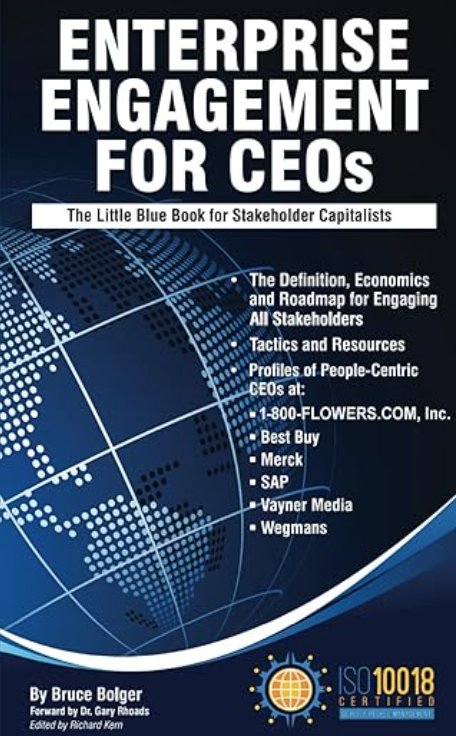
Celebrating our 15th year, the Enterprise Engagement Alliance helps organizations enhance performance through:
1. Information and marketing opportunities on stakeholder management and total rewards:
ESM Weekly on stakeholder management since 2009; click here for a media kit.
RRN Weekly on total rewards since 1996; click here for a EEA YouTube channel on enterprise engagement, human capital, and total rewards insights and how-to information since 2020.
2. Learning: Purpose Leadership and Stakeholder
 Management Academy to enhance future equity value and performance for your organization.
Management Academy to enhance future equity value and performance for your organization.3. Books on implementation: Enterprise Engagement for CEOs and Enterprise Engagement: The Roadmap.
4. Advisory services and research: Strategic guidance, learning and certification on stakeholder management, measurement, metrics, and corporate sustainability reporting.
5. Permission-based targeted business development to identify and build relationships with the people most likely to buy.
6. Public speaking and meeting facilitation on stakeholder management. The world’s leading speakers on all aspects of stakeholder management across the enterprise.





